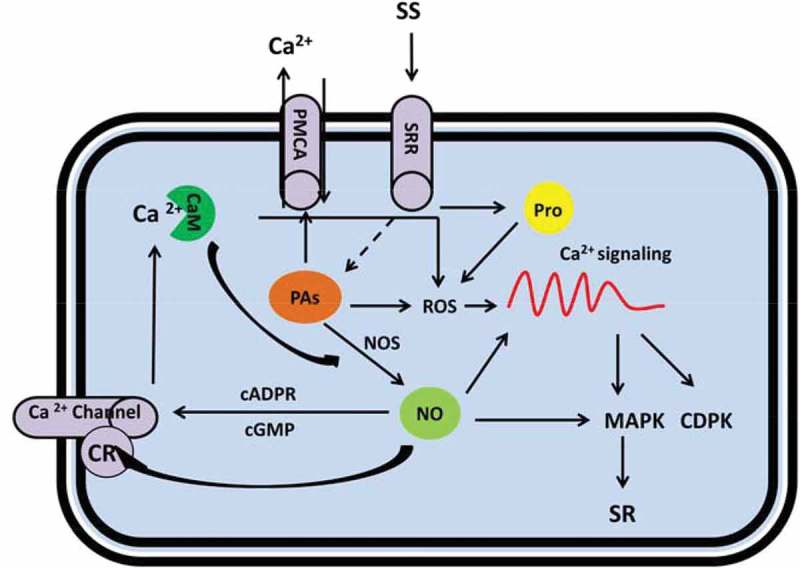Figure 3.

Metabolic scheme for regulation of salt stress responses by polyamines (PAs), nitric oxide (NO) and proline mediated by cytosolic Ca2+ signaling. Under salt stress, elevated PAs content affect Ca2+ level in the cell by either direct activation of PMCA and contributes to Ca2+ excursion (this will result in a steady state level of Ca2+ for normal metabolism in the cell); or indirectly by stimulation of NO and ROS production that results in downstream Ca2+ signaling. Similarly by salt shock, enhanced proline content influences the Ca2+ read out by ROS engagement; while NO is multiply associated with Ca2+ signaling comprising: direct manipulation of the Ca2+ signaling, effect on Ca2+ channels and regulation of MAPKs. CR: Cysteine residue, cGMP: Cyclic GMP, cADPR: Cyclic ADP ribose (cADPR), CaM: Calmodulin, CDPK: Ca2+ dependent protein kinases, MAPK: mitogen-activated proteins kinase, NO: Nitric oxide, PAs: Polyamines, PMCA: plasma membrane-Ca2+-ATPase, Pro: Proline, ROS: Reactive oxygen species, SR: Salt responses, SRR: Salt responsive receptors.
